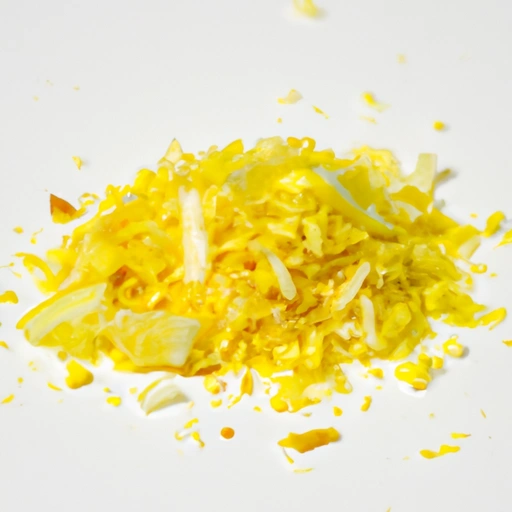Lemon Zest
Description

Lemon zest is the colorful outer layer of the lemon peel, often used to add a bright, citrusy flavor to a variety of recipes. It contains the fruit's essential oils, which are responsible for that fresh, tangy aroma and taste. When a recipe calls for lemon zest, it typically involves grating the outermost skin of the lemon, taking care not to include the white pith underneath, which can be bitter. In terms of measurements, lemon zest is commonly used in small quantities, such as teaspoons (tsp) or tablespoons (tbsp), which correspond to approximately 5 milliliters (ml) or 15 milliliters (ml) respectively in American and European units. Alternatively, it can also be measured in grams (g) or ounces (oz) depending on the recipe.
Common uses
Lemon zest is used in a wide array of culinary preparations, from sweet to savory. It's often used as a garnish, added to marinades, dressings, sauces, baked goods, desserts, and cocktails. It is also a key flavoring in many spice blends and herbal teas.
Nutritional value
Calories
Lemon zest is very low in calories, with one tablespoon containing only about 3 calories.
Protein
It contains a negligible amount of protein.
Fat
Lemon zest has virtually no fat.
Carbohydrates
Carbohydrates are present in a very small amount, primarily from dietary fiber.
Vitamins
Lemon zest is rich in vitamin C, though the amount is less concentrated than in the lemon's juice.
Minerals
It also contains small amounts of minerals such as calcium and potassium.
Health benefits
Consuming lemon zest can contribute to overall health by providing vitamin C which supports the immune system, improves skin health, and acts as an antioxidant. The essential oils in the zest may have mood-enhancing properties, and the dietary fiber promotes digestive health.
Potential risks
While lemon zest is generally safe for consumption, it's important to use organic lemons or thoroughly wash the skin to remove any pesticides or waxes. Excessive consumption of lemon zest may lead to stomach upset in some individuals.
Common recipes
Lemon zest is a key ingredient in recipes such as lemon meringue pie, lemon loaf, lemon curd, and various other desserts. It's also used in savory dishes like lemon chicken, fish dishes, and vegetables.
Cooking methods
It can be added raw to dishes, used as an infusion in cooking liquids, or included in the baking process.
Pairing with other ingredients
Lemon zest pairs well with herbs such as thyme and rosemary, fruits like blueberries and strawberries, seafood, poultry, and is excellent for flavoring pasta and grains.
Summary
Lemon zest is a versatile and flavorful ingredient that adds a fresh, citrus note to both sweet and savory dishes. With its rich vitamin C content and potential health benefits, it's a delicious way to boost the flavor profile of your meals without adding significant calories.